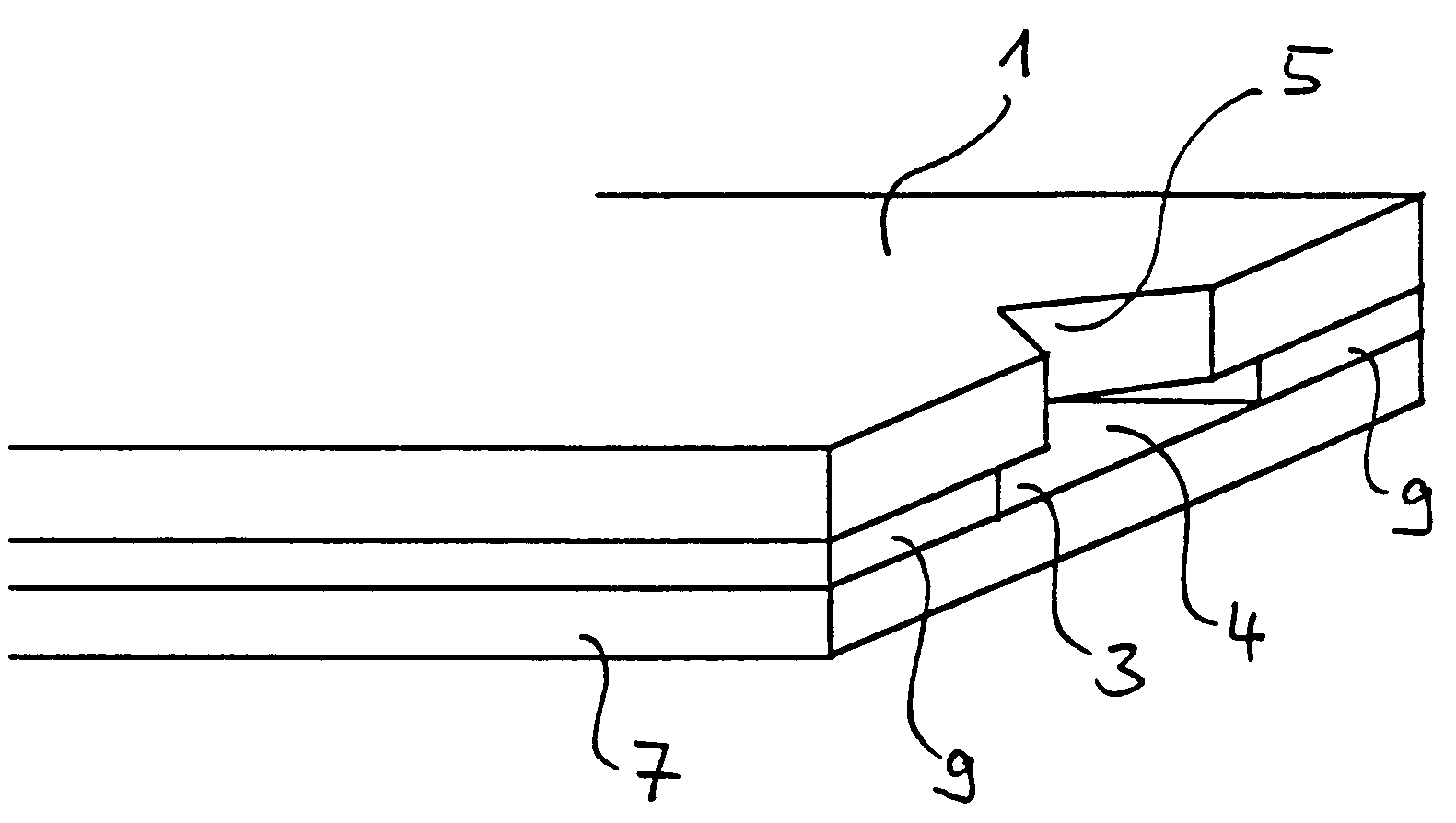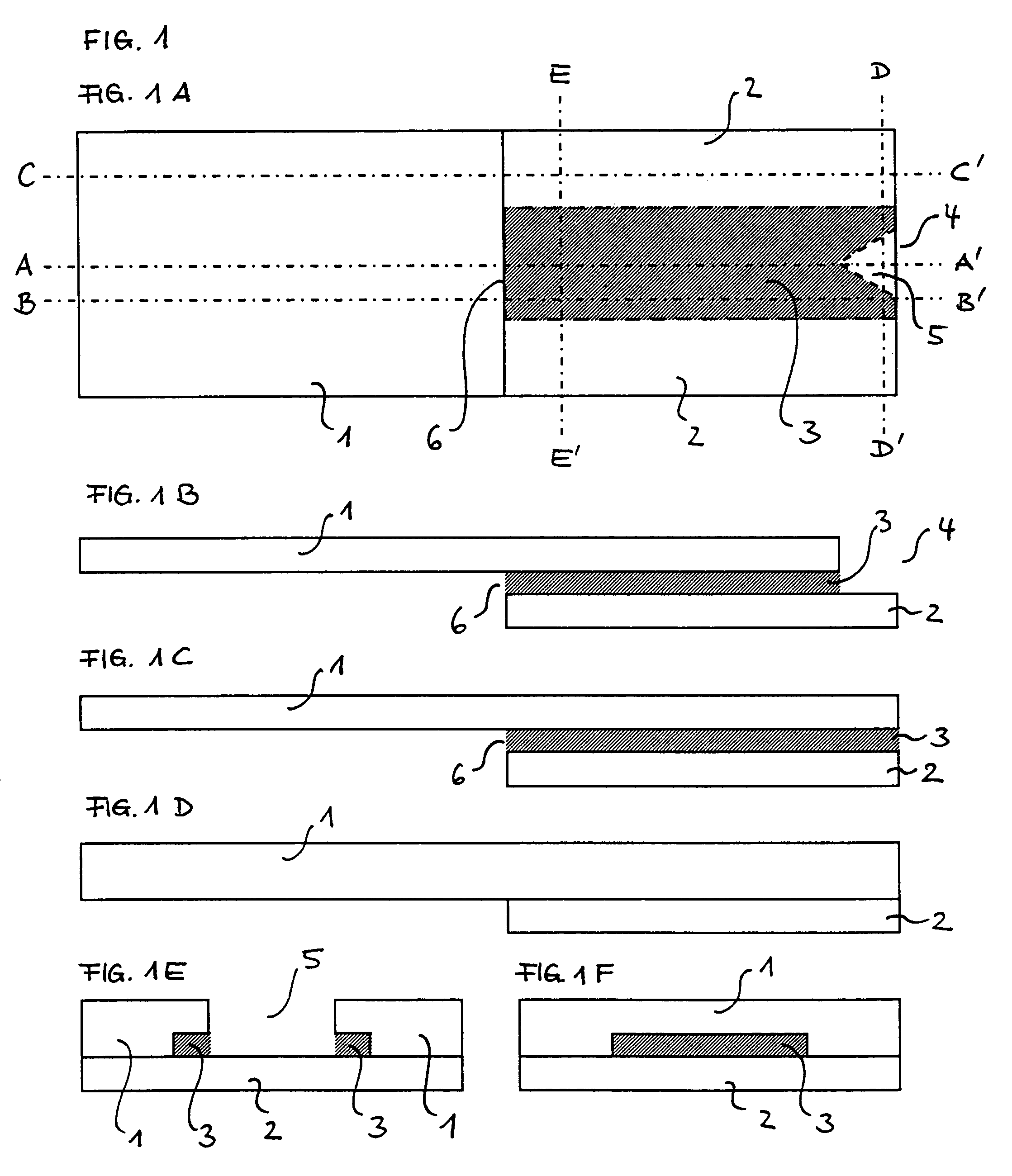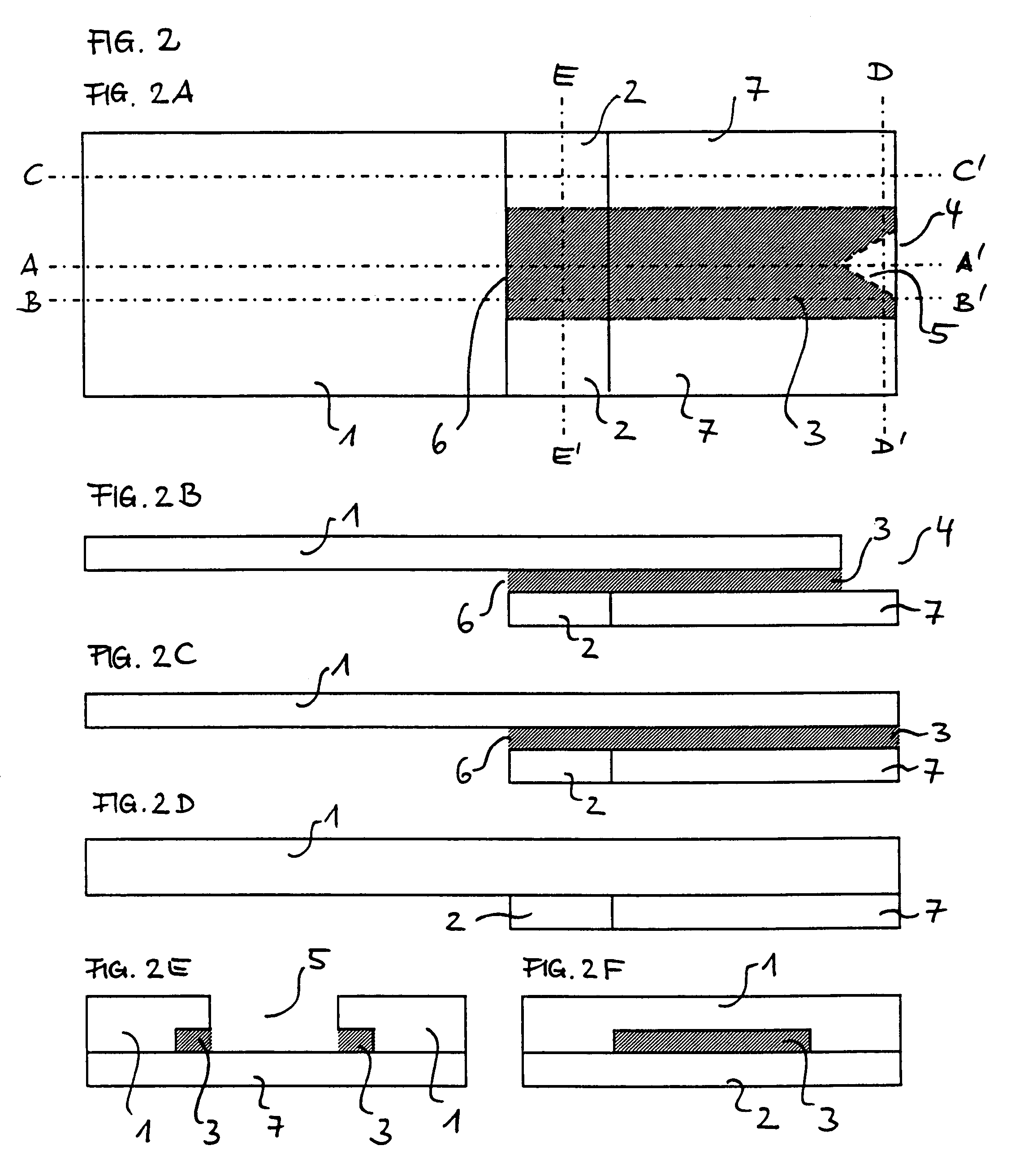Analytical test element with a capillary channel
a technology of capillary channel and analytical test element, which is applied in the direction of biochemistry apparatus, biochemistry apparatus and processes, and withdrawal sample devices, etc., can solve the problems of difficult volumetric dosing, difficult construction, and more pain for the patient whose blood is affected, and achieves the effect of simple for a layman
- Summary
- Abstract
- Description
- Claims
- Application Information
AI Technical Summary
Benefits of technology
Problems solved by technology
Method used
Image
Examples
example 1
Manufacture of the Analytical Test Element According to the Invention
[0066]A double-sided adhesive tape with a thickness of 100 μm is glued onto a 350 μm thick foil of polyethylene terephthalate (Melinex®, ICI, Frankfurt am Main, Germany) coated with a 30 nm thick layer of aluminium which was completely oxidized with water vapour. The foil has a length of 25 mm and is 5 mm wide. A central notch-shaped recess of 1 mm width and 2 mm length is located on one of the short sides. The adhesive tape has a punched hole of 2 mm width and more than 15 mm length which defines the dimensions of the capillary channel. The length of the punched hole is selected to be slightly larger than the desired length of the capillary-active channel which is determined by its cover in order to ensure venting of the channel during filling with sample liquid. A 3 mm long and 5 mm wide detection film is glued onto the side of the adhesive tape which provides the venting at a distance of 1 mm from the end of the...
example 2
Measurement of the Blood Glucose Concentration with the Aid of the Test Element from Example 1
[0068]A drop of sample liquid is placed on the sample application site of the test element from example 1. The capillary of the test element automatically fills with sample within 2 s. If glucose is present in the sample a colour development is visible in the detection film after a few seconds. The end point of the reaction is reached after ca. 30 to 35 s. The colour obtained can be correlated with the glucose concentration of the sample and either evaluated visually or by reflection photometry.
PUM
| Property | Measurement | Unit |
|---|---|---|
| height | aaaaa | aaaaa |
| height | aaaaa | aaaaa |
| height | aaaaa | aaaaa |
Abstract
Description
Claims
Application Information
 Login to View More
Login to View More - R&D
- Intellectual Property
- Life Sciences
- Materials
- Tech Scout
- Unparalleled Data Quality
- Higher Quality Content
- 60% Fewer Hallucinations
Browse by: Latest US Patents, China's latest patents, Technical Efficacy Thesaurus, Application Domain, Technology Topic, Popular Technical Reports.
© 2025 PatSnap. All rights reserved.Legal|Privacy policy|Modern Slavery Act Transparency Statement|Sitemap|About US| Contact US: help@patsnap.com



